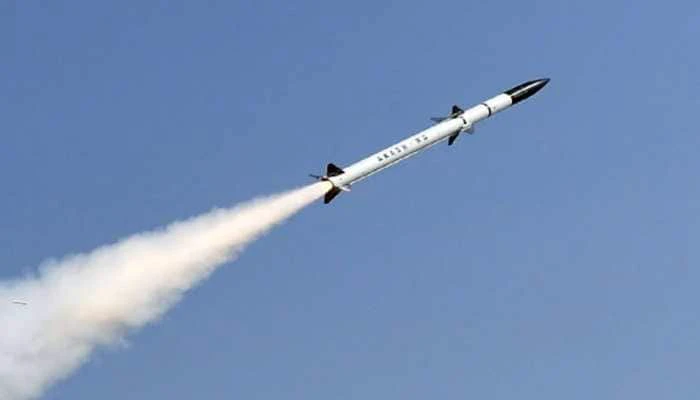New Delhi: Indias homegrown Akash missile system has proven its battlefield mettle, taking centre stage in Operation Sindoor by neutralising a barrage of Pakistani drones and missiles with surgical precision.
Director General of Military Operations (DGMO) Lt Gen Rajiv Ghai on May 12, during a special press briefing, hailed the systems performance as a defining moment in Indias air defence evolution, where indigenous technology did not just hold the line, it dominated it.
Air Marshal AK Bharti elaborated on the integrated defense network that enabled the success, crediting the Indian Air Forces Integrated Air Command and Control System (IACCS).
It was this cohesive Air Defense (AD) architecture, backed by consistent funding, that allowed us to face waves of drones and unmanned aerial vehicles (UCAVs) head-on, he stated.
The operation also showcased Indias soft and hard kill counter-drone technology, effectively neutralising Pakistans unmanned threats with precision.
But Akashs story does not end on the battlefield.
Far from the Indo-Pak border, the Indian missile system has entered a new arena, an international competition for Brazils medium-altitude air defense contract, where it is up against Chinas Sky Dragon-50. The Brazilian Army initiated its search in November 2023, requesting quotes from global defense suppliers. By February 2024, a second round sought more detailed specifications.
Brazilian military chief General Tomas Miguel Mine Ribeiro Paiva has reportedly shown keen interest in Akash, suggesting a potential government-to-government procurement deal with India. His interest is grounded in personal experience. In August 2023, he attended a live demonstration of Akash in India and reviewed other indigenous systems like the Arjun tank and ALH Dhruva helicopter. Prior to that, his team had visited China in 2023 to evaluate the Sky Dragon-50 and SH15 howitzer.
Unlike the Chinese system, whose exact capabilities remain vague, Akashs strengths are well documented. Developed by Bharat Dynamics Limited (BDL), it is a short-range surface-to-air missile (SAM) designed to protect key assets from aerial threats. Its architecture allows it to strike helicopters, jets and UAVs flying between 4 and 25 kilometers, using advanced ECCM (Electronic Counter-Countermeasures) and a fully automated rapid-response system.
What makes Akash especially formidable is its command-guided mechanism that allows a single unit to engage four targets simultaneously at 25 kilometers, something no other system in the world has demonstrated so far, according to the Defence Research and Development Organisation (DRDO). Mounted on mobile platforms and immune to both active and passive jamming, the system is built to move fast and deploy faster by rail or road.
Presently boasting 82% indigenous content, Akash is on track to hit 93% by 2026-27, a feat that not only makes it cost-effective but also highly adaptable. Several countries, including Armenia, have already placed orders, while others (from the Middle East, Africa, South America to Southeast Asia) have shown growing interest. The Philippines and Vietnam are among the potential future operators.
Akash is often compared to Israels Iron Dome, but some experts argue it surpasses its Israeli counterpart. Not only can it target UAVs and smaller projectiles, but its open-system architecture enables it to fit into both current and future defense frameworks.
During Indias Astrashakti exercise in December 2023, a single Akash battery took down four UAVs flying in tight formation, which then broke off to attack from multiple directions, an impressive show of coordination and effectiveness.
The system comes in upgraded variants, Akash-NG (New Generation) and Akash Prime. Both have an operational ceiling of 18 kilometers and a range of up to 30 kilometres.
Akash Prime goes a step further with an indigenous active Radio Frequency (RF) seeker, improving its precision and performance in cold and high-altitude conditions.
Akash works everywhere mountains, deserts and plains. Its adaptability and reliability make it unmatched. Being fully indigenous means India can tailor the system to suit the needs of foreign buyers, delivering not just a product, but a strategic partnership.
From national defense staple to international contender, Akashs journey signals a significant leap in Indias defense capabilities. As more global militaries line up for a closer look, it is clear Akash is no longer just a missile system; it is a symbol of Indias evolving strategic ambition.
